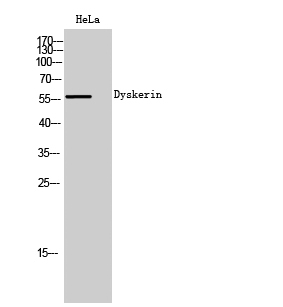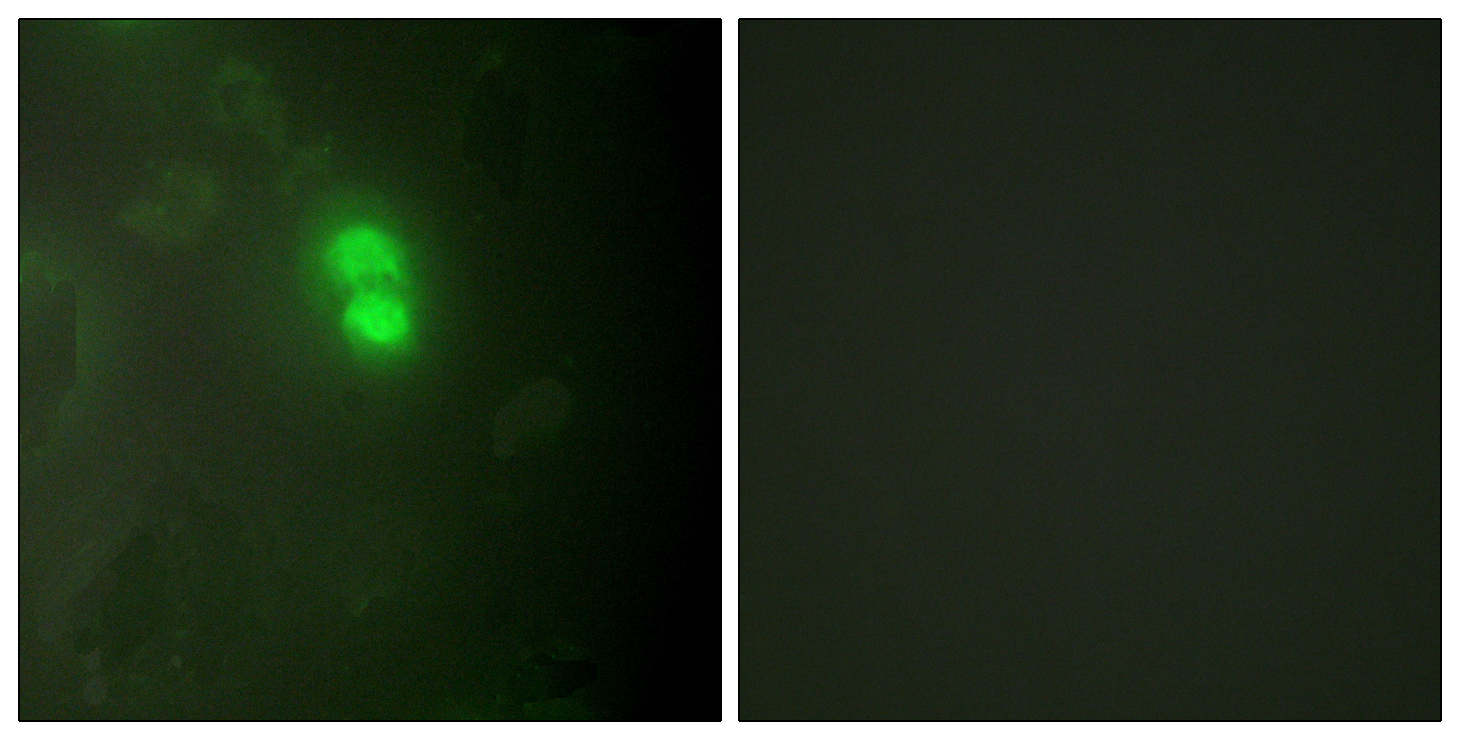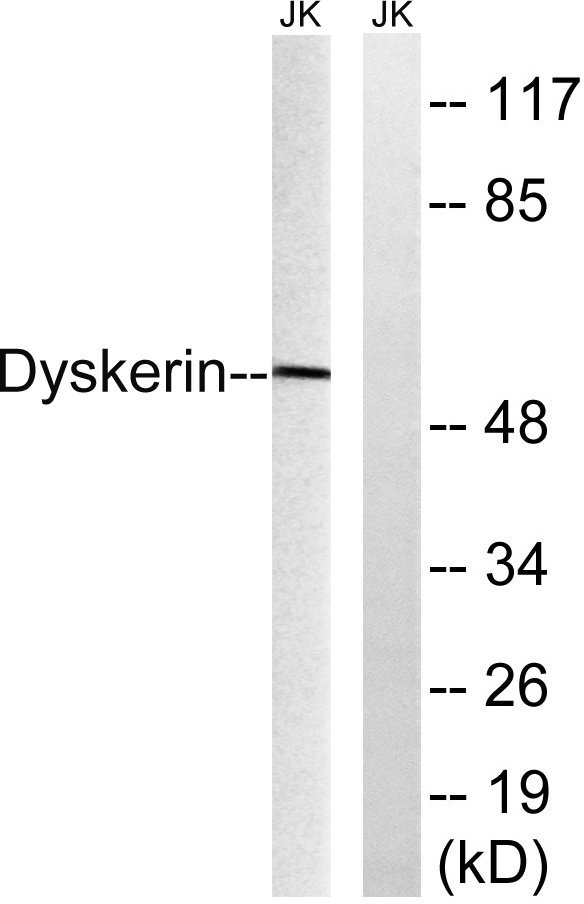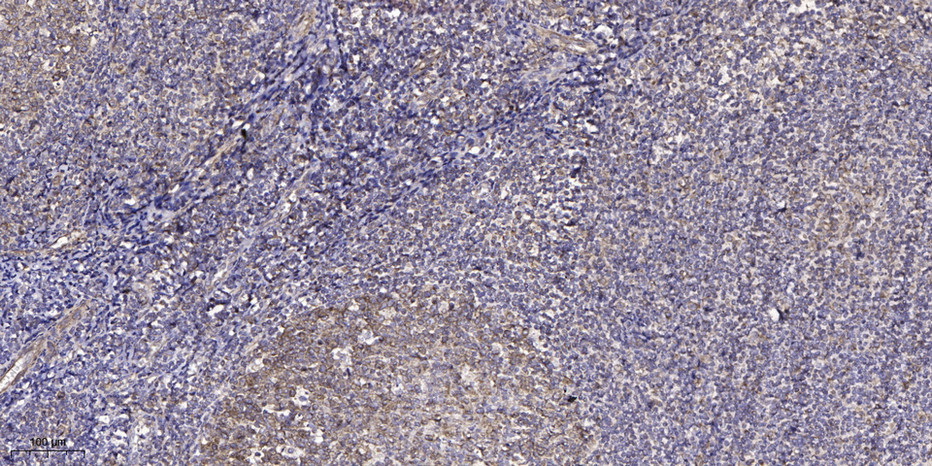Dyskerin Polyclonal Antibody
- Catalog No.:YT1439
- Applications:WB;IHC;IF;ELISA
- Reactivity:Human;Mouse;Rat
- Target:
- Dyskerin
- Fields:
- >>Ribosome biogenesis in eukaryotes
- Gene Name:
- DKC1
- Protein Name:
- H/ACA ribonucleoprotein complex subunit 4
- Human Gene Id:
- 1736
- Human Swiss Prot No:
- O60832
- Mouse Gene Id:
- 245474
- Mouse Swiss Prot No:
- Q9ESX5
- Rat Gene Id:
- 170944
- Rat Swiss Prot No:
- P40615
- Immunogen:
- The antiserum was produced against synthesized peptide derived from human Dyskerin. AA range:171-220
- Specificity:
- Dyskerin Polyclonal Antibody detects endogenous levels of Dyskerin protein.
- Formulation:
- Liquid in PBS containing 50% glycerol, 0.5% BSA and 0.02% sodium azide.
- Source:
- Polyclonal, Rabbit,IgG
- Dilution:
- WB 1:500 - 1:2000. IHC 1:100 - 1:300. IF 1:200 - 1:1000. ELISA: 1:40000. Not yet tested in other applications.
- Purification:
- The antibody was affinity-purified from rabbit antiserum by affinity-chromatography using epitope-specific immunogen.
- Concentration:
- 1 mg/ml
- Storage Stability:
- -15°C to -25°C/1 year(Do not lower than -25°C)
- Other Name:
- DKC1;NOLA4;H/ACA ribonucleoprotein complex subunit 4;CBF5 homolog;Dyskerin;Nopp140-associated protein of 57 kDa;Nucleolar protein NAP57;Nucleolar protein family A member 4;snoRNP protein DKC1
- Observed Band(KD):
- 57kD
- Background:
- dyskerin pseudouridine synthase 1(DKC1) Homo sapiens This gene functions in two distinct complexes. It plays an active role in telomerase stabilization and maintenance, as well as recognition of snoRNAs containing H/ACA sequences which provides stability during biogenesis and assembly into H/ACA small nucleolar RNA ribonucleoproteins (snoRNPs). This gene is highly conserved and widely expressed, and may play additional roles in nucleo-cytoplasmic shuttling, DNA damage response, and cell adhesion. Mutations have been associated with X-linked dyskeratosis congenita. Alternative splicing results in multiple transcript variants. [provided by RefSeq, Jan 2014],
- Function:
- catalytic activity:RNA uridine = RNA pseudouridine.,disease:Defects in DKC1 are a cause of dyskeratosis congenita X-linked recessive (XDKC) [MIM:305000]. XDKC is a rare, progressive bone marrow failure syndrome characterized by the triad of reticulated skin hyperpigmentation, nail dystrophy, and mucosal leukoplakia. Early mortality is often associated with bone marrow failure, infections, fatal pulmonary complications, or malignancy.,disease:Defects in DKC1 are the cause of Hoyeraal-Hreidarsson syndrome (HHS) [MIM:300240]. HHS is a multisystem disorder affecting males and is characterized by aplastic anemia, immunodeficiency, microcephaly, cerebellar hypoplasia, and growth retardation.,function:Required for ribosome biogenesis and telomere maintenance. Probable catalytic subunit of H/ACA small nucleolar ribonucleoprotein (H/ACA snoRNP) complex, which catalyzes pseudouridylation of rRNA.
- Subcellular Location:
- [Isoform 1]: Nucleus, nucleolus . Nucleus, Cajal body . Also localized to Cajal bodies (coiled bodies). .; [Isoform 3]: Cytoplasm .
- Expression:
- Ubiquitously expressed.
- June 19-2018
- WESTERN IMMUNOBLOTTING PROTOCOL
- June 19-2018
- IMMUNOHISTOCHEMISTRY-PARAFFIN PROTOCOL
- June 19-2018
- IMMUNOFLUORESCENCE PROTOCOL
- September 08-2020
- FLOW-CYTOMEYRT-PROTOCOL
- May 20-2022
- Cell-Based ELISA│解您多样本WB检测之困扰
- July 13-2018
- CELL-BASED-ELISA-PROTOCOL-FOR-ACETYL-PROTEIN
- July 13-2018
- CELL-BASED-ELISA-PROTOCOL-FOR-PHOSPHO-PROTEIN
- July 13-2018
- Antibody-FAQs
- Products Images

- Western Blot analysis of HeLa cells using Dyskerin Polyclonal Antibody cells nucleus extracted by Minute TM Cytoplasmic and Nuclear Fractionation kit (SC-003,Inventbiotech,MN,USA).

- Immunofluorescence analysis of HeLa cells, using Dyskerin Antibody. The picture on the right is blocked with the synthesized peptide.

- Western blot analysis of lysates from JurKat cells, using Dyskerin Antibody. The lane on the right is blocked with the synthesized peptide.

- Immunohistochemical analysis of paraffin-embedded human tonsil. 1, Antibody was diluted at 1:200(4° overnight). 2, Tris-EDTA,pH9.0 was used for antigen retrieval. 3,Secondary antibody was diluted at 1:200(room temperature, 45min).



